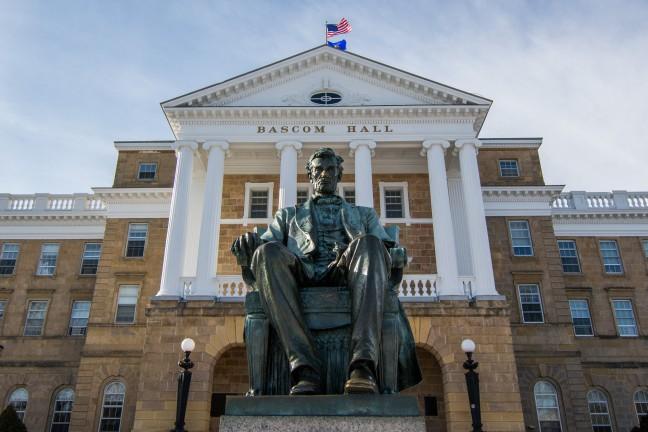The University of Wisconsin’s four year graduation rate has just about closed the gap between itself and peer institutions, according to a new post on Chancellor Rebecca Blank’s blog Thursday.
The post “Good news on student outcomes” reported data compiled and analyzed by the Office of Academic Planning and Institutional Research and found the average time students spend between their first day of class up to commencement is is down from 4.13 last year to 4.07 for 2015-16 graduates.
“This is our lowest average time to degree in the 25 years we have tracked this indicator,” Blank wrote.
UW now falls in the middle of peer institutions for average graduation time, according to Jocelyn Milner, APIR’s Vice Provost and Director.
UW’s four-year graduation rate, at 60.7 percent, is slightly above its peer average of 59 percent, while its six-year bachelor’s degree graduation rate, at 85.2 percent, can be compared to the 80 percent peer average.
The blog post also reported UW’s freshman-sophomore retention rate is 95.4 percent, more than three percentage points higher than the peer average.
After noting the diversity of this year’s freshman class, the post acknowledges the graduation rates for students in minority groups are 10 percentage points below the overall graduation rates, but it has narrowed from a 16.5 percent gap five years ago.
Milner attributed the improved graduation rates to a combination of factors.
Improved undergraduate advising with more explicit expectations, like implementing a campus-wide policy for students to declare a major by the time they’re seniors and requiring freshmen to meet with an adviser before they are permitted to withdraw from all their courses, has helped students stay on track to graduate.
UW’s implementation of a prerequisite program has also helped students take the appropriate coursework, she said.
“One of the things we’ve found in research is that the students who have trouble completing their coursework are less likely to have the prior coursework,” Milner said.
The university also ramped up need-based financial aid, supporting more students to finish their degrees in a timely manner. In 2015, the university gave students $6 million in need-based aid. This year, they provided $30 million.
Milner said she also believes the university’s expanded career initiatives give students a better sense of post-grad life.
“They’re [more] eager to graduate because they have a better sense of what kind of experiences they’re going to have after graduation,” Milner said.














